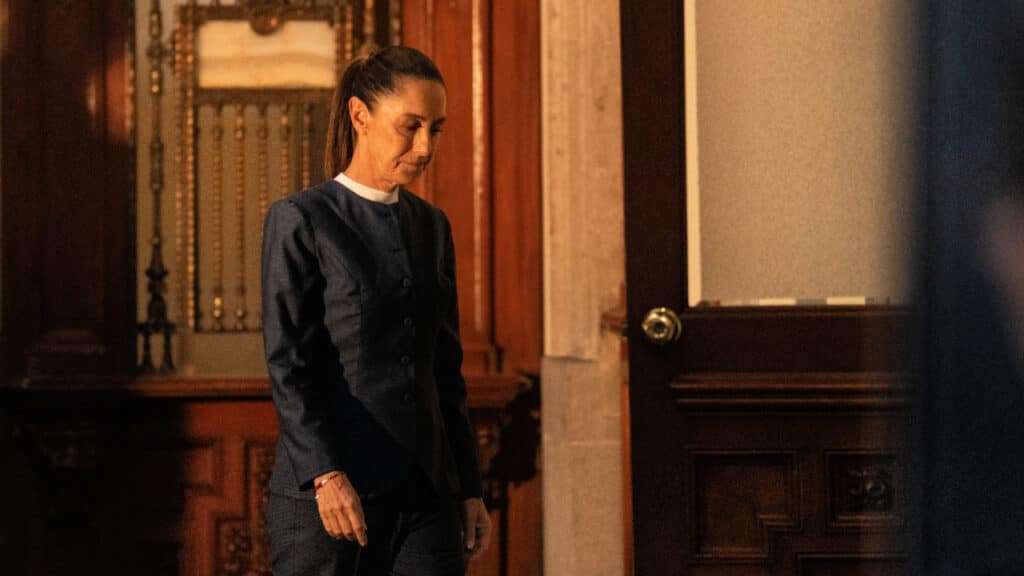A Teacher Tried to Shame Two Latina Students for Speaking Spanish. The Internet Is Having None of It
The video of a teacher chastising two Latina students for speaking Spanish has gained traction on the internet.
In the TikTok clip, the unidentified teacher confronts students for speaking Spanish in her classroom. “It’s unfair to other people. You’re speaking a language half the people in the classroom can’t speak,” the woman says in the now-deleted video.
Linguistic erasure isn’t new in the U.S.
Originally uploaded to the TikTok account @theogazez, the post has prompted conversations about the everyday reality of Hispanic students in the U.S. Language erasure, after all, has been a recurrence throughout history. In the 20th century, for example, Texas enforced a “no-Spanish” rule. The laws forbade teachers from speaking any language other than English. It also allowed them to punish students who spoke Spanish in the classrooms.
The humiliations spanned fines, verbal violence, and physical punishments. A recount from the Blackwell School Alliance in Texas even describes mock burials for the Spanish language. In an act of symbolic violence, students were asked to write their favorite Spanish words on slips of paper. School staff would then place the paper in boxes that they buried beneath a U.S. flag. The activity received the name of “Burial of Mr. Spanish.” It wasn’t until 1973 that the Bilingual Education and Training Act (S.B. 121) recognized bilingual education in Texas.
Meanwhile, in the early aughts, various educational institutions enforced an “English only” policy across the U.S. In Kansas, where the viral video took place, the policy allowed student suspensions and even expulsions for speaking Spanish. In fact, in 2008, a court ruled that an English-only policy at St. Anne Catholic School in Wichita didn’t violate any laws.
Today, the discourse reopens, vilifying Spanish speakers
The @theogazez’s viral video brings linguistic violence to the center of debate once again. Outraged internet users have pointed out that the teacher initially fails to explain why the students are not allowed to speak Spanish.
“I have been talking to you about [not talking in Spanish] since the beginning of school, every time you talk in Spanish,” the teacher says. One of the students rebuts, “You just tell us to stop talking, [because] you don’t like it.”
The teacher eventually accuses the students of using Spanish to make others feel bad. She states that speaking a language the rest of the class doesn’t understand makes it seem like the young Latinas are talking about them. The video poster replies, “Just because we speak Spanish, you’ll automatically believe we’re talking about someone.”
Before it was taken down, the video garnered more than 1 million likes. In a new post, the account shared, “There is no new update at this time[…] I’ll continue to keep you updated as things develop.” The involved school also shared a statement, acknowledging the “verbal incident.” However, they said they were unable to share details due to confidentiality.
There are 41 million native Spanish speakers in the U.S., and an additional 12 million are bilingual. That makes Spanish the second most-spoken language in a country without an official language. However, as users share from different corners of the internet, what the Latina students experienced isn’t uncommon.
The rise of political extremism has created an increasingly hostile environment for Spanish speakers
Although the US is home to the second-largest Spanish-speaking population in the world, the instances of linguistic violence are widespread. From border patrol officers profiling Spanish speakers to schools suspending students for speaking Spanish in the corridors, discrimination based on language is prevalent in the U.S.
The issue, however, has intensified as government immigration policies have impacted the Latino community. Earlier this year, the Supreme Court lifted a judge’s restraining order, clearing the way for Immigration and Customs Enforcement officers to profile people based on race, language, or location. The U.S. administration has also fostered an increasingly hostile environment towards minorities, targeting diversity programs and freedom of speech.
Writing an opinion piece for the New York Times, columnist Carlos Lozada argues that speaking Spanish in this climate feels like a transgressive act. “Spanish has become a sanctioned indicator of potential criminality in the United States of America,” writes Lozada. “The language of Miguel de Cervantes and Andrés Cantor, the world’s fourth most spoken tongue, has been deemed the sound of bad hombres in our midst.”
Just like Lozada, many believe that the path to cultural erasure is detrimental to the U.S.
Instead of instilling fear of speaking Spanish, they claim, people should regard multilingualism as an asset for the country. “This proliferation of voices is not a dilution of American greatness,” says Lozada. “To the contrary, every additional language I hear is an affirmation of America’s power and allure; it means one more person from one more place has wanted to make this place home.”




